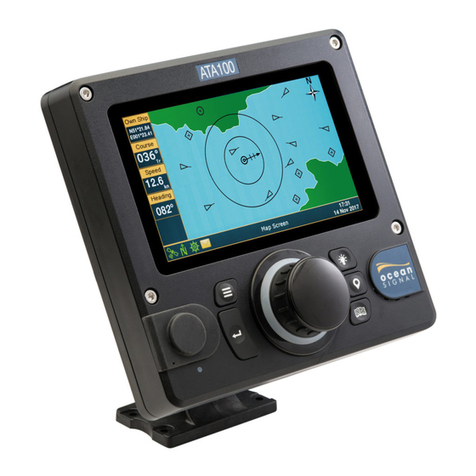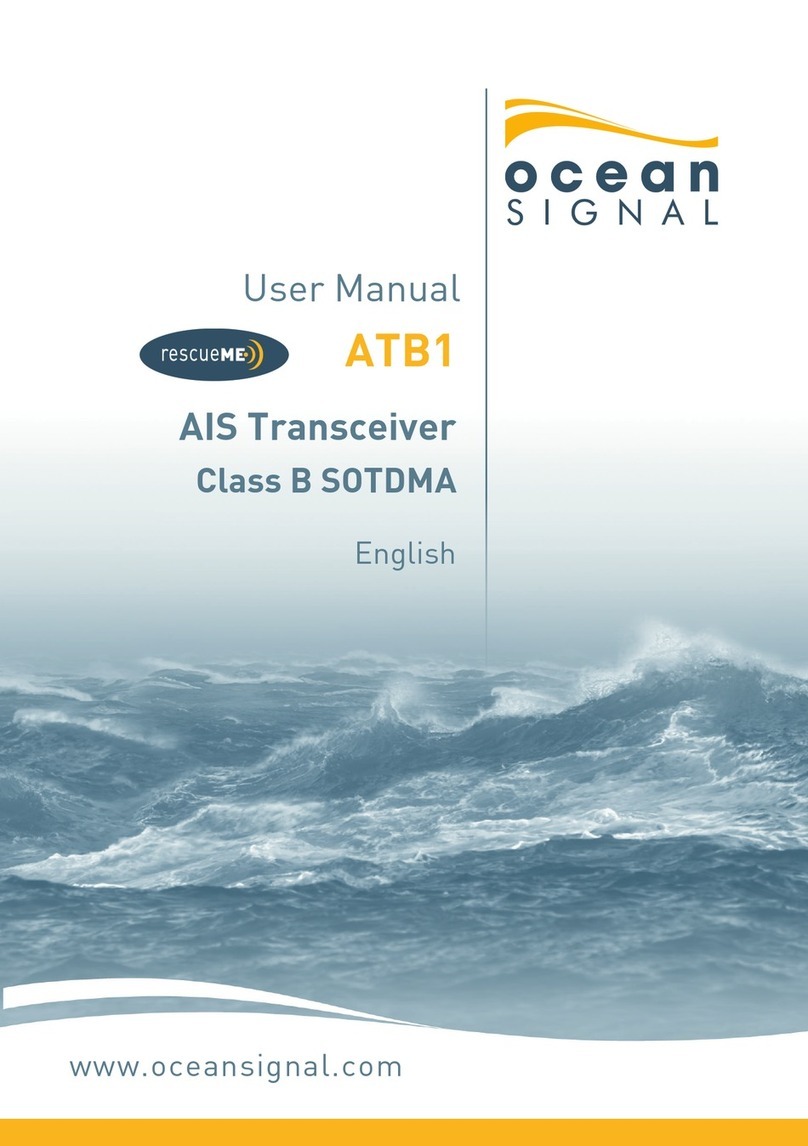
21/04/2020 912S-03333-01.05 5
ATA100 INSTALLATION MANUAL
1.3 Warnings
This product is designed to assist navigation and should not be used in the place of
appropriate navigational judgement. AIS should be used as a complement to navigation and
should not be used to replace installed equipment such as RADAR or ECDIS.
! It is highly recommended that the operator of the ATA100 read and follow the
operation instructions within this manual to ensure accurate operation. Failure to
do so may impair proper functionality.
! The coastal mapping on this device is provided for guidance purposes only.
It has not been verifi ed or approved for navigational use by any marine or
waterway authority and therefore must only be used for reference purposes or in
conjunction with other approved navigational mapping sources.
! This product is designed to assist navigation and should not be used in the place
of appropriate navigational judgement. AIS should be used as a complement to
navigation and is not a replacement for installed RADAR or ECDIS equipment.
! AIS devices such as the ATA100 from Ocean Signal can only monitor other AIS
equipped vessels and the Offi cer of the Watch (OOW) should always be aware that
other surrounding vessels may not fi tted with AIS equipment.
! The ATA100 should be installed by a qualifi ed installer or technician and the
installation instructions included in this manual must be followed succinctly and
carefully without deviation.
! The AIS antenna emits low levels of electromagnetic radio frequency radiation
which can be hazardous to health. All persons must maintain safe distance of 3m
horizontally and 1m vertical from the AIS antenna whilst transmitting.
! It is recommended that the Ocean Signal ATA100 is used in conjunction with the
supplied GNSS antenna. Use of an alternative GNSS antenna may impair the
functionality of the Ocean Signal ATA100.
! All maintenance and/or repair work should be carried out by trained persons
authorized by Ocean Signal. Do not attempt to disassemble this equipment
as doing so may cause fi re, electrical shock, serious injury or malfunction of
equipment. This product contains no user-serviceable parts.
! Do not install the ATA100 in a fl ammable atmosphere such as an engine room or
near to fuel tanks.
! Do not install the ATA100 in a location subject to excessive solar heat such as in
direct sunlight or underneath a windshield.
! The ATA100 is a maritime radio transmitter and is subject to radio licensing laws.
Please contact the relevant authority in your country for further information
regarding radio license requirements.
! False information transmitted by the ATA100 can result in risk to other vessels as
well as your own. It is the user’s responsibility to ensure that vessel sensors are
confi gured and calibrated correctly and that all AIS transmission information from
your vessel is accurate and up to date.































